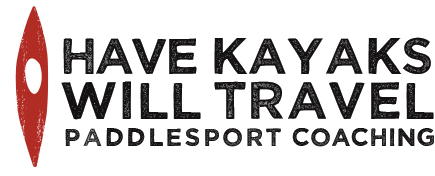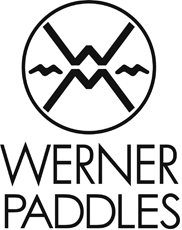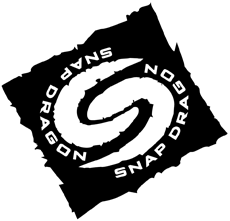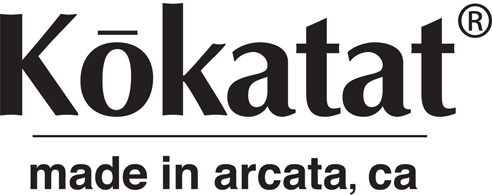Applying a keel strip to a composite kayak is a good idea. It protects the keel from wear and tear, especially when launching and landing. It’s also a good introduction to working with gel coat. But it requires some skill, materials and time, and it adds some weight to your boat. Everything you need for a traditional keep strip, which costs about $40 per boat. Josh Tatro laying out and marking where the keep strip will go. Masking off the area. Applying layers of gel coat over fiberglass tape. Sanding and cleaning up the edges between layers of gel coat. From start to finish, it takes about seven hours spread over a couple days. And that’s if you’re familiar with the process. So when we heard about KeelEazy, a peel-and-stick PVC keel strip, we were intrigued. It costs $4 per foot (for the 2-inch width), is available in black and white (as well as other colors if you buy 100 feet of it), and sticks to fiberglass, plastic and metal. It’s also supposed to be easy to remove and replace if necessary. So we did a side-by-side test. We applied a traditional keep strip to one boat, and KeelEazy to the other. The materials were certainly minimalist. Heat gun, alcohol, glove, scissors….action. It went on very easily, even over curved surfaces, and it was easy to cut around the skeg opening with a razor blade. Clean the keel with alcohol. Round the ends of the KeelEazy strip. Attach and start peeling off the backing. Keep pulling and peeling. Cut around the skeg opening. And you’re done! It took about half an hour from start to finish. The only hitch we encountered was difficulty getting the backing to separate. In the You Tube video, Chris Mitchell has no trouble, but we noticed he was wearing a coat. We were in our hot back yard. So we popped the KeelEazy in the freezer for a couple of minutes… Just chillin’. ….after which it was easy to separate. It’s been about a month since we applied both keel strips. We also applied a strip to a plastic boat in the Geneva Kayak Center rental fleet to see how that fares. So far, the KeelEazy has stayed on. It’s non-marking, slides easily across other boats during rescues, and seems to be durable.We’ll report back toward the end of the season, but we’re optimistic that for a little more money, kayakers have the option of saving time, effort and weight. KeelEazy and traditional keel strips, side by...
Back from Great Lakes Sea Kayak Symposium
Danny Mongno, Wener Paddles regional sales manager and field marketing coordinator, paddling past sailboats in the Grand Marais harbor. The Great Lakes Sea Kayak Symposium (GLSKS) is a venerable event. It’s the longest-running sea kayak symposium in the midwest, held annually in Grand Marais, MI, a tiny town (population about 300) that just won $40,000 in the We Hear You America contest to help rebuild its harbor breakwall. When GLSKS comes to town, Grand Marais explodes with activity. Woodland Park Campground is awash in tents and trailers, the beach is covered in kayaks, and Lake Superior Brewing Company is packed every evening. The symposium offers three days of tours along with two and a half days of instruction, both on and off the water. Coaches from around the midwest and far beyond come to teach, present, socialize and compete in the manic kayak race to win rights to wear the ceremonial paisley vest. An ominous designation for a paddling destination. We don’t mind driving long distances for a good symposium, but we took advantage of the opportunity by adding a visit to Whitefish Point, the “Graveyard of the Great Lakes” and home to the Great Lakes Shipwreck Museum. With Keith Wilke, we learned about some of the famous and not-so-famous wrecks that lie just offshore–some under just 20 feet of water. Interestingly, wrecks in this area were not solely caused by storms and shoals, as they were in the Sleeping Bear Dunes area. Here, many were caused by collisions as shipping traffic converged to move through the relatively narrow channel between Lake Huron and Lake Superior. We couldn’t resist getting on the water, of course. Sharon and Keith prepare to paddle around the tip of Whitefish Point. The beach, too, looked like a graveyard–of driftwood, not ships. From there, we drove to Grand Marais. The next day, we led a group on an 18-mile trip along the west side of Grand Island, which is accessible only by ferry or boat. We paddled along the coast, beneath waterfalls and through arches, admiring the clear water and stunning painted cliffs. A calm day on the west side of Grand Island. Then the symposium began in earnest, with nonstop classes and activities. For students, this is an opportunity to learn from a variety of coaches; for instructors, it’s a chance to work together and learn from each other. For everyone, it’s time on the water, which is always good. Steve Scherrer teaching a course on boat control for wind and waves. Each symposium has its own personality. This one’s character is highly influenced by Bill Thompson of Downwind Sports, whose enthusiasm, energy and openness make everyone–instructors and students alike–feel welcome and appreciated; and by Kelly Blades, who possesses a...
Choosing new drysuits
Hanging out with our drysuits, old and new. After six seasons, our drysuits were shot. Seams were leaking; holes were spontaneously appearing. Everything has a lifespan, and after six years of heavy use, our drysuits had reached theirs. We didn’t reflexively choose to purchase Kokatat drysuits again. Before replacing them, we examined the materials and designs of drysuits from various manufacturers and talked to paddlers who own them. But in the end, we chose Kokatat drysuits again because we were happy with our old suits as well as the customer service every time we needed advice or a repair. We liked the front-entry zipper (some manufacturers place the entry zipper in back), the high-quality Goretex, and the option of a front relief zipper for women. And the fit was great. (Kokatat is also willing to customize suits for a reasonable extra charge.) There are a lot of options beyond manufacturer. Here’s what we chose and why: Style: We chose to go with the GMER again — the Goretex Meridian drysuit with a tunnel and boots but no hood. For us, this is the best combination: Goretex has a longer lifespan than Tropos; the tunnel is great for keeping water out of the cockpit during rough-water paddling or play; the boots keep your feet dry and eliminate the need for an additional gasket around your ankles; the flap over the zipper protects that essential and expensive part; and we prefer to wear a separate hood, not one that’s attached when we need it and when we don’t. Zippers: Men have just two choices: zipper or no zipper. Having no zipper means you have to almost entirely take off the drysuit every time you need to pee, which is a hassle in the best of circumstances and unpleasant in the worst. It means exposing the dry layers beneath to the elements, and also exposing your latex gaskets to sunscreen as you pull them over your face and hands, which hastens the deterioration of the latex. Women can choose no zipper, a drop-seat zipper, or a front-relief zipper much like the men’s but lower down. (The latter requires the use of a female-to-male adapter, of course.) After trying drysuits with a drop-seat zipper and talking to women who have them, Sharon chose the front-relief zipper, mainly because the drop-seat zipper adds bulk to the suit and isn’t any easier for her to use than the front-relief zipper. Color: Alec chose a mango-colored drysuit again because it’s the lightest color available, and therefore least likely to cause him to overheat when paddling hard in cold conditions. (Light colors reflect more heat than darker colors.) Also, mango shows up well on the water. Sharon chose a black suit because she is...
Always check the weather
Today we intended to go paddling with Hannah and Josh. We gathered our gear at the crack of noon, then looked outside, where the trees were bending in the wind. “If it’s that windy here, it has to be nuts on the lake,” we said. So we checked the wind speed at the Harrison Street crib. We knew there was a storm on the other side of the lake, where Keith was hoping to spend the day paddling. But a check of the wind speed on this side of the lake confirmed our observations: at 1 p.m., the peak winds were 61 knots. So we unloaded our gear and headed down to the lake. The sky was ominous, and lightning crackled in the sky over the lake. The winds were intense, and the waves were washing over the revetments. 12th Street Beach was closed when we arrived, and numerous would-be bathers gazed longingly at the waves. After awhile, the sky began to brighten and the lightning moved south, so the lifeguards decided to raise the green flag, which meant they needed to launch the row boat. We felt fortunate to catch the winds at their peak. Since they were out of the southeast, where the fetch is shortest, they died down quickly. It was a good day for watching waves and taking photos. We’ll paddle tomorrow...
Surprise birthday party for Scott Fairty
Scott, surfing a wave at the Geneva Kayak Center’s Yorkville site. All good conspiracies are grounded in a solid motivation. Last night’s conspiracy to host a 50th birthday party for Scott Fairty was no exception. When Scott was hired as Geneva Kayak Center’s general manager a few years back, Chicago paddling instructors knew our students wouldn’t be the only beneficiaries. We, too, had a new mentor–one who soon also became a paddling partner and friend. Part one of the conspiracy was the party, attended by various local paddlers as well as Scott’s three kids and his father, Jack. Caitlin, Gordon and Tara Fairty. Jack Fairty, who drove in for the occasion. Part two was the gift: Dozens of instructors, students and friends pitched in to buy Scott a new whitewater boat: A Pyranha Varun. (A huge thanks to Kelly Blades and Pyranha for facilitating the purchase.) Scott begins to realize something is up when the card contains about 40 names…. …then finds, inside a small box, a model of the boat that will arrive in a week or so. No 50th birthday party would be complete without a little ribbing from the kids about Scott’s age. “Over the hill!” the cake declared. “Happy birthday, you old fart.” Caitlin serves Scott a choice slice of cake. There may be nothing magical about celebrating the actual day on which a person was born, but it’s a great opportunity to celebrate the person. Scott has brought a lot to the Chicago-area paddling community. We’re looking forward to many more years on the water with...
Annual trip to Adventure Crafters
The new Adventure Crafters space at CBEC (Chesapeake Bay Environmental Center). Every summer, we spend a weekend teaching at Adventure Crafters in Maryland, a paddle center with a heavy emphasis on instruction and a loyal following of long-term students as well as a continuous influx of newer paddlers. For us, it’s an opportunity to paddle and teach on salt water, try out some of our coaching ideas in a new environment, and reconnect with owner Robert Schrack, his family and the paddling community Adventure Crafters has nurtured. Robert Schrack in his office at Adventure Crafters. This year, we arrived early enough to meet Robert at Cape Henlopen State Park in Lewes, Delaware for a day of paddling on the coast, where we were treated to a sweet tidal race. Then we returned for two days of classes in Queenstown, Maryland. Two students in the “Yes, You Can!” women’s class, celebrating a successful assisted rescue. Somehow, no matter how we bill a particular class, we always end up returning to fundamentals. Students at every level seem to benefit from a review of the essentials of successful paddling: posture, connectivity, torso rotation, edge control, paddle grip and angle, and basic strokes. Small instructor-to-student ratios enable us to address these simultaneously for students with various levels of proficiency. If all that sounds like work, it shouldn’t. We include lots of games and activities–everything from clambering on the deck for balance, to cockpit basketball for maneuvering–to develop skills on a less conscious level. This concept is neither new nor unique to us. We owe a debt to the BCU (British Canoe Union) and a myriad coaches with whom we’ve worked who’ve emphasized the importance of games and activities in learning. We end every visit with a rousing rodeo event, which is just plain fun. Racing a raft of kayaks, a new rodeo event we learned from Kelly Blades. Time flies when you’re having fun. We spent our last day paddling again with Robert, reflecting on our classes and spotting eagles and herons along the banks of the Chester River. Long-term paddling relationships are special, whether they’re with students, fellow coaches, friends or family members. Those of us who have a mix of all four are fortunate. Final day of paddling in Maryland. We’ll return in...
Brief stop at the Kayak Centre of Rhode Island
The Kayak Centre of Rhode Island in Wickford, RI. En route from Toronto to Delaware, we paid a visit to Matt Bosgraaf, who wears two hats: inventory manager for the Kayak Centre of Rhode Island, and east coast sales manager for GRO (Great River Outfitters, the east coast importer of Valley and North Shore boats)–two completely separate enterprises. Fortunately, we were able to pry him away from both for a couple of hours on the water. A quiver of kayaks. The Kayak Centre has a large showroom and offers classes, tours, rentals and repairs. The Warsick location carries between 120 and 140 boat models, including sea kayaks, recreational kayaks, sit-on-tops, fishing kayaks, racing boats and more. We took advantage of this extensive inventory to try out a few boats we’d never paddled: the Valley Etain 17.5, the North Shore Polar, and the North Shore Atlantic LV. Alec and Matt in the harbor near the Kayak Centre. Switching boats midway through our paddle. The immediately environment is remarkably diverse. Within 10 miles of the shop, there are all sorts of conditions: calm water, rough water, current, surf, rocks, and even a tidal rip. We didn’t have enough time to explore beyond the bay on this trip, but we’ll be back. After all, we have another 117 boats to try...
MEC Paddlefest Toronto makes a splash
One beach, two days, 600+ new paddlers. We just returned from MEC Paddlefest Toronto, an “urban celebration of all things paddlesport related” run by Mountain Equipment Co-op, the Canadian equivalent of REI (more or less). “Celebration” hardly begins to describe this astonishing event. Over the course of two days, Paddlefest offers land and water clinics on sea kayaking, whitewater kayaking, canoeing and stand-up paddling, complete with all necessary equipment, for people who register in advance or sign up on-site. Sponsors and clubs staff informational booths, vendors provide demo boats and gear, kayak polo players shoot baskets, and dragon boats zip back and forth. For two days, Sunnyside Beach is awash in a wide diversity of boats and people. The master organizer behind Paddlefest Toronto is Liz Burnside, who didn’t seem nearly as frazzled as she ought to have been. Chalk it up to some magical alchemy of experience (she’s run this event five times before), talent and temperament; the event ran remarkably smoothly. Liz Burnside, keeping the event on track. Before the festival began, about 20 instructors took advantage of a “mini instructor symposium” organized by Erik Ogaard, a Paddle Canada Instructor Trainer and head of paddling instruction for the Harbourfront Canoe and Kayak Centre. This provided an opportunity for us to meet some of the energetic Canadian coaches and for all of us to get an instructor update. David Johnston, fellow coach and blogger, and Keith Wikle’s Canadian doppelganger. Dympna Hayes, the infectiously energetic co-owner of learntokayak.ca. Michael Pardy, co-founder of SKILS and Senior Instructor Trainer for Paddle Canada (one of his many outdoors and paddling certifications), shared some of his “detection/correction” strategies for helping instructors improve students’ strokes. Kelly Blades, who defies description, showed how games can help to develop balance and boat control. Erik, ensuring that everyone fuels up. Michael and Kelly, strategizing about our instructor update. The fest itself was eye-opening for us. Classes were 90 minutes long, and most students had signed up in advance, paying just $10 for each on-water course and $5 for each land-based course. In defiance of the idea that people who pay less care less, these students could not have been more committed. They showed up in whatever clothing they had — often nothing more than quick-dry shorts and tops — eager to get on the water, which was still in the mid 50s. We quickly found them boats, PFDs, skirts and paddles and took off, wondering how long they would last once they got wet. But they were tenacious; they wanted to get everything they possibly could out of each of us. Even our rescue and rolling clinics, during which participants were immersed most of the time, didn’t dissuade these avid students. Many participants lacked appropriate...
Rediscovering the Chicago shoreline
We recently completed and delivered a presentation called “Paddling in Chicago,” a historical journey down Chicago’s manmade coastline that explained why and how today’s familiar features were created. In the process, we learned things we didn’t previously know, and rekindled our own interest in our local shoreline. Today we returned to one of the places that fascinate us most: the far South Side, where the shoreline is built of cast-off relics from the demise of the US Steel Southworks plant. At its peak, the plant employed 20,000 people and produced beams that were used in the Sears Tower and other skyscrapers. When it closed in 1992, it left behind a pile of twisted steel and concrete boulders, weeds and imporverished neighborhoods. A peaceful docking spot. And yet, this section of the shoreline is lovely. The massive slabs of casting material look like volacanic boulders; broken-up hunks of concrete buildings and staircases seem like strangely sculpted rocks. Elsewhere this might be a lichen-covered rock. Here it is a steel-impregnated casting slab. A piece of rebar stands in for a sturdy root or belay rope. That “standing in your boat” game turns out to have a practical application. Chicago’s shoreline is anything but natural, and sometimes we mourn the lack of wild spaces around here. But after industry leaves, nature starts to take over, and there is a pleasing, post-urban quality to this stretch of shoreline. The more we learn about it, the more we appreciate...
Whitewater, WMCKA, waves and more
Spring finally arrived, and with it a range of pleasing water levels at the Yorkville whitewater course, the annual West Michigan Coastal Kayakers Association symposium, and waves on Lake Michigan. Flower blossoms herald the season. Blame it on the season; we were too busy to post. But not too busy to paddle. We experienced the Yorkville whitewater course at fun levels between 2,300 cfs and 3,600 cfs, as well as the not-fun level of 6,800 cfs, when nearly all the features were washed out and we chose not to attempt a first descent of the sidewalk. Hannah, back from college, reunited with her kayak. We also had the pleasure of attending the grand opening of the whitewater course, now named the Marge Cline Whitewater Course in honor of the Chicago Whitewater Association’s “River Mom,” who died in 2007. We even got to take the Mayor of Yorkville and a few aldermen down the course in a raft. The cold start to the spring was caused, in part, by weather patterns that were still bringing cold air to Chicago from the north and northeast. Here that means waves, and we had plenty of autumn-like surfing days early in the season. By Memorial Day weekend, we were ready for warmer weather, which slowly arrived during the annual West Michigan Coastal Kayakers Association symposium. The event was abbreviated this year by an afternoon thunderstorm, which kept everyone off the water all afternoon on Sunday. But we had the good fortune to have two stellar fiddlers among us — sisters Carrie and Emma from the Upper Peninsula — who kept our spirits up when the weather threatened to douse them. Next up: the Toronto Paddlesport Festival. Stay...







